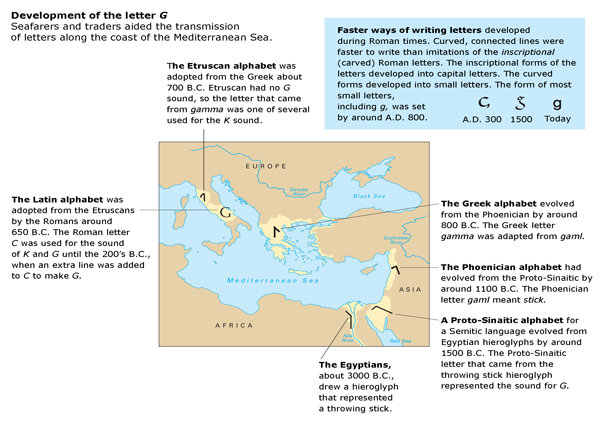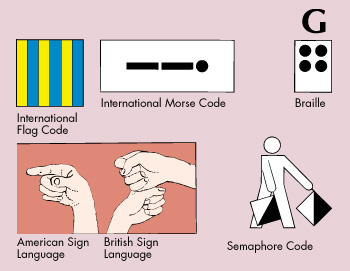G is the seventh letter of the alphabet used for the modern English language. It is also used in a number of other languages, including French, German, and Spanish. The sound of hard G occurs in such words as go, ugly, big, goggle, and egg. The letter G may also be pronounced with a J sound, as in the word general. At the beginning of a word, G is silent before N—as in gnat. Combined with H, the letter G can have the sound of F, as in tough.

The letter G did not enter the alphabet until Roman times. G evolved from the letter C, so the early development of both letters is the same. Scholars believe the letter C evolved from an Egyptian hieroglyph (pictorial symbol) that represented a throwing stick, a stick used by the ancient Egyptians to hunt birds. The Phoenician letter that can be traced to that hieroglyph is the third letter of the Phoenician alphabet, gaml. The Phoenicians used the letter to represent the beginning G sound of gaml, which was their word for throwing stick. Around 800 B.C., the Greeks adapted the letter and called it gamma. The Etruscans adopted the Greek alphabet about 700 B.C. Etruscan, however, did not have a G sound.
Although the Etruscans had no G sound, they did have a K sound, and they used three letters to represent it, kappa, qoppa, and gamma. When the Romans adopted the alphabet from the Etruscans, by around 650 B.C., they needed to write both the G sound and the K sound. For several hund red years they used C, the letter evolved from gamma, for both G and K. According to the ancient Greek author Plutarch, the Roman Spurius Carvilius Ruga added an extra vertical line to the letter C to make G around 275 B.C. Soon, standard Latin included a letter G.

